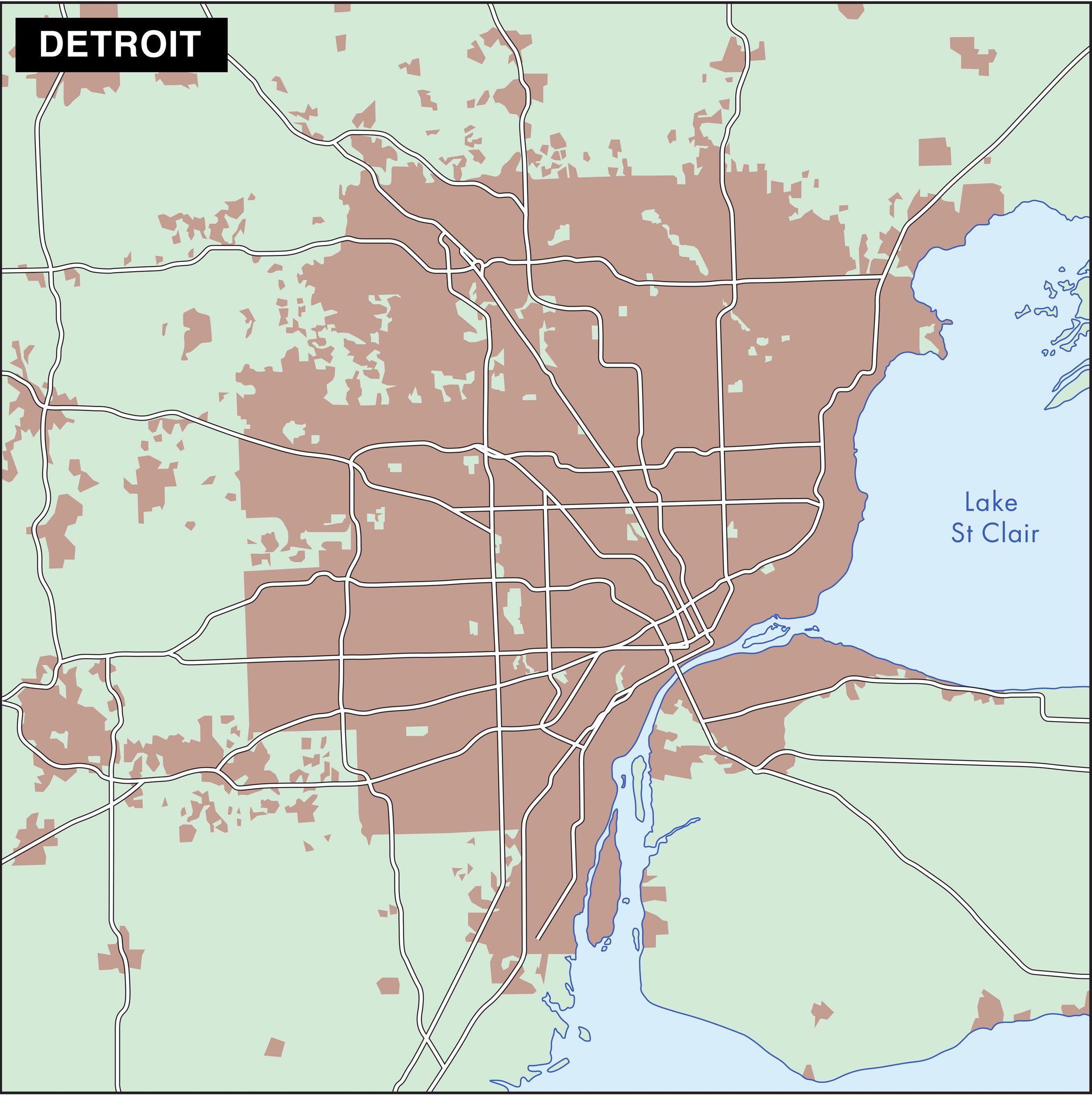The Case of Detroit
The functional urban area (FUA) of the Case Study in Detroit
Detroit is a city shaped by legacies of neglect - including traumatic losses of place and systemic racism - there have been efforts to reimagine Detroit in ways that repairs past and present harms. Nature is envisioned to have a critical role. Nature-based solutions become a means to soak up pollution and storm water and to prevent people’s basements to become backups for the sewerage system, as a means to connect communities, to be (food) secure, to beautify neighborhoods or to make space for the more-than-human to thrive. But in envisioning what nature can do, there is also a reality what it actually does: dividing over connecting or distracting from other pressing social justice issues and legacies.
What brings these divergent efforts and unfolding contestations together is demonstrating human intent and care in building these green and blue spaces that counter neglect. Demonstrating – seeing and then believing – care for peoples and natures becomes critical in the potential for Detroit to reconfigure in ways that might realize transformative change for justice. These community-driven efforts of caring for peoples and natures continue in multiple nature-based solutions, such as the Arboretum, Rescue MI Nature Now, and the Sacred Grounds rain gardens program.
And now people can see that. Oh, so not only do they see that [the Joe Louis Greenway] now they're seeing these new trees too. It's like, oh, oh, these things really are happening. Oh, look at my city.
Three examples of nature-based solutions in Detroit
Initiated in 2019, the Arboretum is a non-profit organization dedicated to building an Arboretum, to create connected green spaces and to foster the care for trees. By creating these connected green spaces while honoring the legacies of the place, the Arboretum provides shelter for the more-than-human as well as creating places of care for communities in the neighborhood.
Rescue MI Nature Now also (officially) started in 2019, which over time grew from community gardens to including pollinator habitats, beehives, the activation of overgrown alleys (i.e. from unintentional to intentional natures) and their more recent ‘’Forest Therapy’’. Together with the community they develop solutions in their community hub for the challenges the neighborhood faces.
Detroit’s Sacred Grounds program was initiated in 2019, and it is led by a coalition of NGOs aiming to build a movement of houses of worship that install native rain gardens across metropolitan Detroit. These houses of worship, like the Gesu Catholic school, aim to combat the severe flooding events in Detroit while creating places where communities and wildlife can thrive.
Figure 1: As an act of care, the Arboretum places collars on trees in the city to protect them from mowing. (Photo source: Anouk Fransen)
Figure 2: Pollinator habitats installed by Rescue MI Nature Now, creating spaces of care where both human and the more-than-human can thrive. (Photo source: Anouk Fransen)
Figure 3: Rain Gardens at the Gesu Catholic school has implemented several rain gardens (among others) on their property to care for our home, the Earth. (Photo source: Anouk Fransen)






